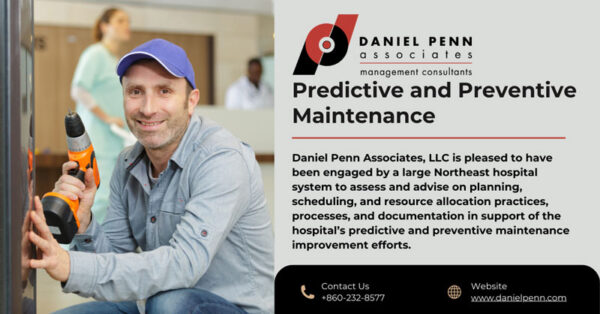
The Power of Intentionality: How to Sustain Continuous Improvement and Maximize Efficiency
Companies that embed intentionality into their operations—through structured problem-solving, clear accountability, and cultural reinforcement—see long-term success.
Achieve Peak Performance in Your Hospital’s Maintenance with These Key Metrics
This article explores the essential KPIs that hospital leaders should monitor and the modern technologies available to track these metrics effectively.
Lean’s Two Key Ingredients
The rising cost of doing business is challenging us all to find ways to work more efficiently. Lean programs usually begin with good intentions...
Facilities Maintenance Re-engineering for a Multi-campus Hospital System
Daniel Penn Associates analyzes and helped evolve its work processes, management tools, staff responsibilities and metrics for a multi-campus hospital system.
How Lean Practices Mirror Olympic Training
Your company’s Lean and continuous improvement teams drive organizational growth and excellence. While their critical role may often go unnoticed, these teams share traits with the world’s most elite athletes.
How much is ineffective maintenance costing hospitals?
Every dollar a hospital’s maintenance organization spends on unnecessary labor, equipment or processes erodes their service, reputation, and bottom line.
Healthcare, News |
Hospital Predictive and Preventive Maintenance
DPA is pleased to have been engaged by a large Northeast hospital system in support of the hospital’s predictive and preventive maintenance improvement efforts.
Choosing the Right Maintenance Approaches for Your Organization
Daniel Penn Associates recently asked members of LinkedIn’s Association of Asset Management Professionals Group “What is the maintenance strategy that you use the most with your organization?”
How to get the most out of your company’s lean leadership training
Many senior leaders and senior staff do not understand the fundamentals of lean. It’s one thing to recite knowledge of lean, and another to live lean every day—both on the

